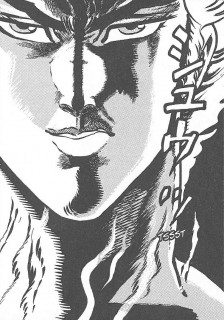 Creator: Aya Kanno
Creator: Aya Kanno
U.S. publisher: Viz Media
ISBN: 9781421580906
Released: September 2015
Original release: 2014
Aya Kanno has had several of her manga series released in English in the past—Soul Rescue, Blank Slate, and Otomen—all of which were quite different from one another. One of the things that I appreciate most about Kanno is the versatility apparent in the range of her work. I was especially looking forward to her most recent series Requiem of the Rose King and was thrilled when Viz Media licensed for an English-language release. The manga is loosely inspired by William Shakespeare’s historical plays Henry VI (in its various parts) and Richard III which are in turn a dramatization of England’s Wars of the Roses. As a fan of Shakespeare and as a fan of Kanno, I was very interested in seeing her interpretation. Although upon initial reading the first volume of Requiem of the Rose King could occasionally be somewhat confusing—visions, nightmares, and reality all bleeding into one another—I loved its dark atmosphere, theatrics, and dramatic nature. I was very glad when Requiem of the Rose King, Volume 2, initially published in Japan in 2014, was translated into English in 2015.
The bloody struggle for England’s throne continues. The Lancasters executed King Richard II for treason and has now ruled the country for three generations. However, there are many who still view the Lancasters as usurpers and who support the House of York’s claim to the throne. Richard, the Duke of York, is poised to become the next monarch after King Henry VI is captured and coerced into relinquishing the crown in order to end the bloodshed. But then Queen Margaret takes command of the King’s military forces, unwilling to let power to slip from her and her family’s hands. The resulting conflict does not go well for the Duke and with this turn of events the dynastic war escalates. During this time, both Henry and the Duke’s youngest son Richard are imprisoned in a tower, unaware of the battle’s progress and the changing tides of war. Richard is utterly devoted to his father and wants to see him crowned as England’s king. Thus, the Duke’s death on the battlefield will set into motion a tragic series of events for his son and for the entire kingdom as the darkness that resides within Richard is unleashed.
 In part, the first two volumes of Requiem of the Rose King have been a prologue to the rest of the series. The stage, characters, and mood have now been fully set for the unfolding drama and tragedy. There is a huge psychological element to Requiem of the Rose King. Kanno draws parallels between Henry and Richard which emphasize that, especially in regards to their mental states. Both men are touched by madness, but it manifests in vastly different ways. Henry’s insanity seems to be fairly benign although it does cause significant political turmoil. It also provides a way for him to escape from his responsibilities as a ruler and to avoid a very violent reality. Richard’s madness, on the other hand, is the result of facing that same reality head on. He becomes utterly consumed by rage and a desire for vengeance. Compared to Henry’s passivity and what could be described as harmlessness, Richard takes on a much more active and venomous role. The contrast between Henry and Richard and light and dark extends beyond their characterizations and is captured visually as well; Richard’s black hair and clothing consistently set him apart from everything else.
In part, the first two volumes of Requiem of the Rose King have been a prologue to the rest of the series. The stage, characters, and mood have now been fully set for the unfolding drama and tragedy. There is a huge psychological element to Requiem of the Rose King. Kanno draws parallels between Henry and Richard which emphasize that, especially in regards to their mental states. Both men are touched by madness, but it manifests in vastly different ways. Henry’s insanity seems to be fairly benign although it does cause significant political turmoil. It also provides a way for him to escape from his responsibilities as a ruler and to avoid a very violent reality. Richard’s madness, on the other hand, is the result of facing that same reality head on. He becomes utterly consumed by rage and a desire for vengeance. Compared to Henry’s passivity and what could be described as harmlessness, Richard takes on a much more active and venomous role. The contrast between Henry and Richard and light and dark extends beyond their characterizations and is captured visually as well; Richard’s black hair and clothing consistently set him apart from everything else.
Anno’s Richard is both a tragic and terrifying figure. The beginning of Requiem of the Rose King shows the creation of a monster—a young man who is forcefully taking ownership of his own destiny after being irrevocably scarred emotionally and psychologically. Since his birth, Richard has been labeled as a demon child and a harbinger of death. He initially struggles against this stigma, but has now begun to embrace his own darkness. His father, the one person he loved and admired the most is dead; his mother has abandoned him multiple times; Richard sees very little incentive to retain his humanity if everything he truly cares about will be torn from him and he is already viewed as an abomination. The second volume of Requiem of the Rose King is defining for Richard. Among the chaos, violence, and death of war, he loses what little innocence and hope that he might have had. Although many of the surrounding circumstances were beyond his control, ultimately the choice to become a villain is his own. He is driven by despair, madness, and rage, willing to do anything to ensure his own future and the downfall of the Lancasters and anyone else who would stand in his way.







